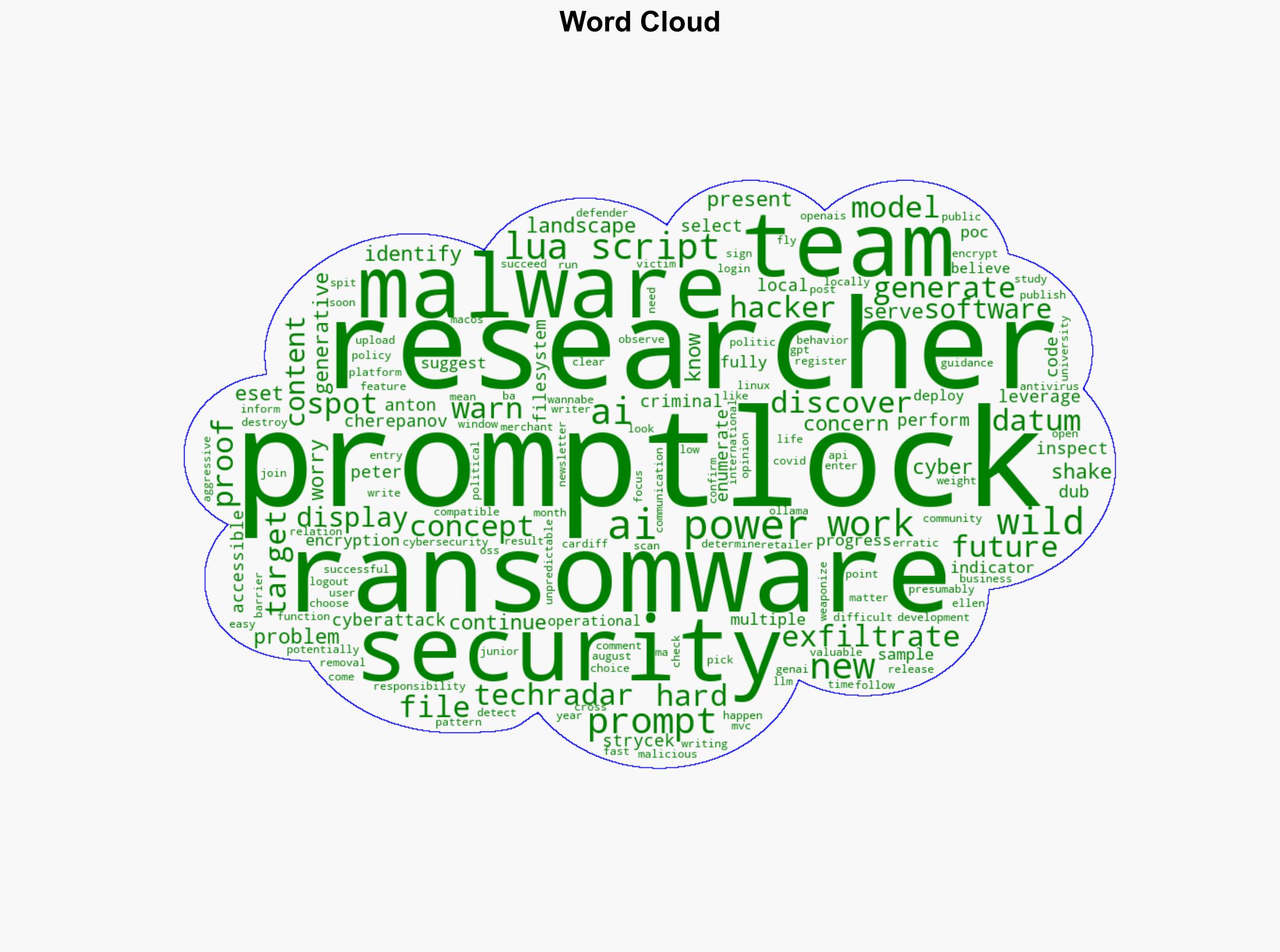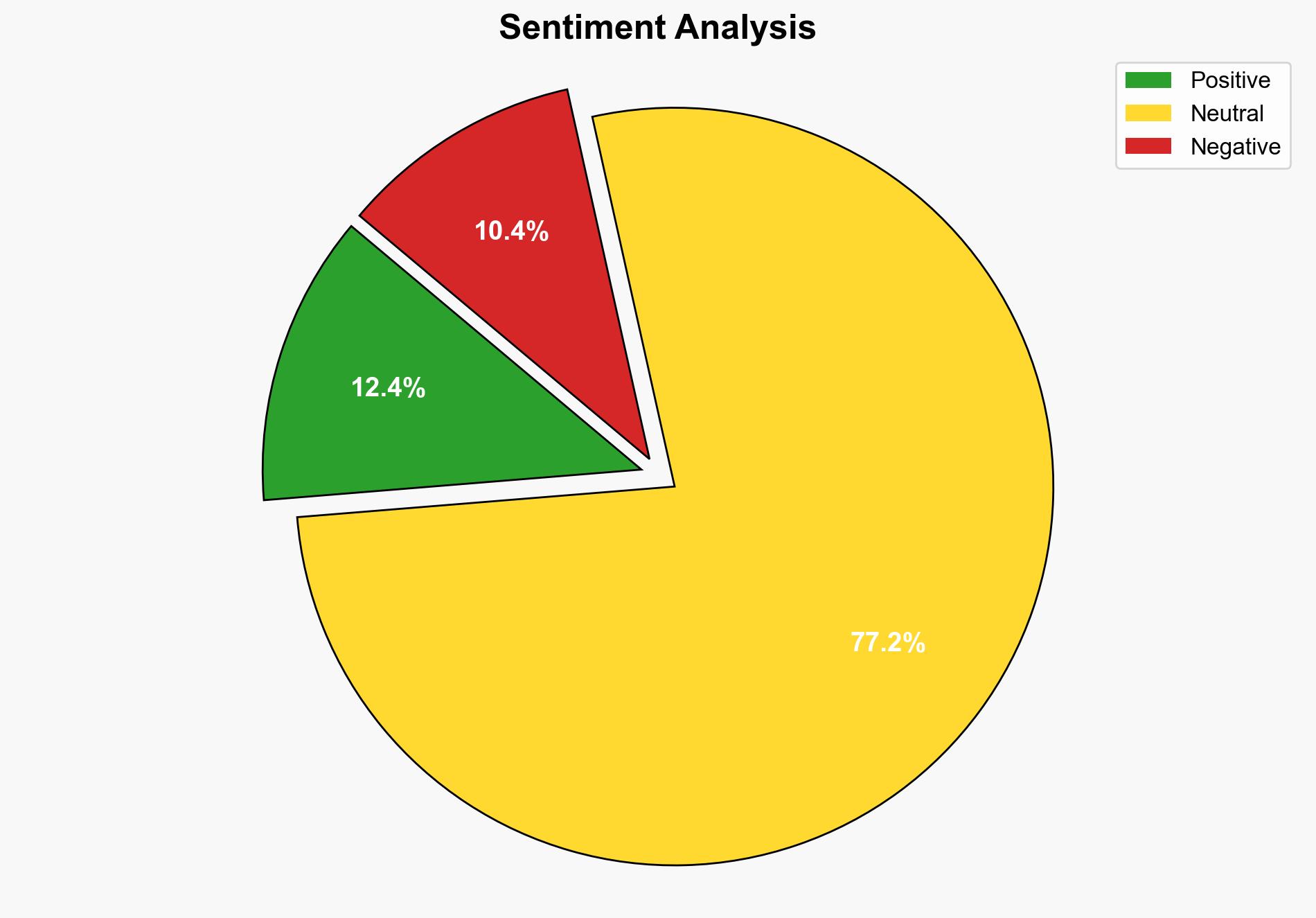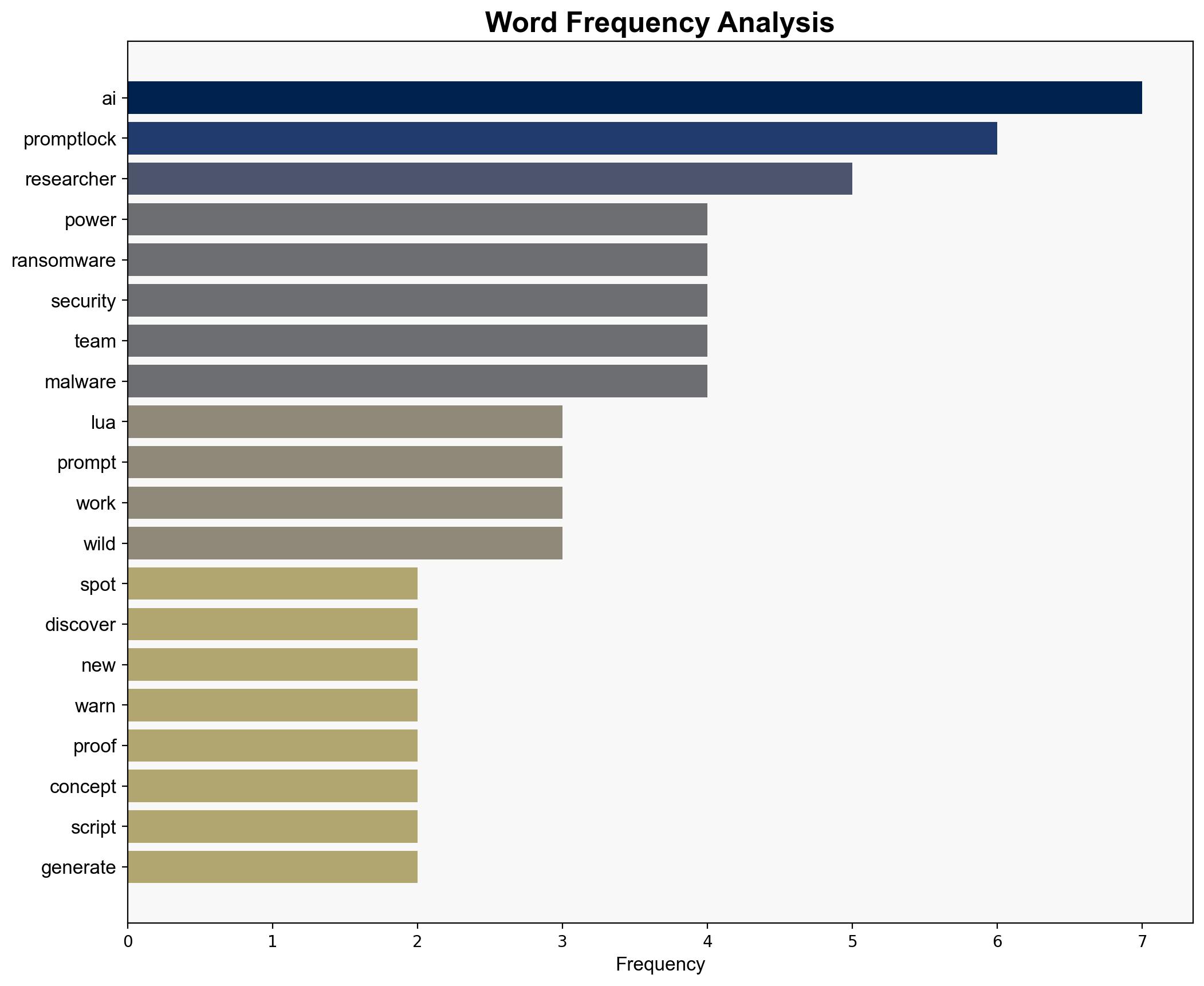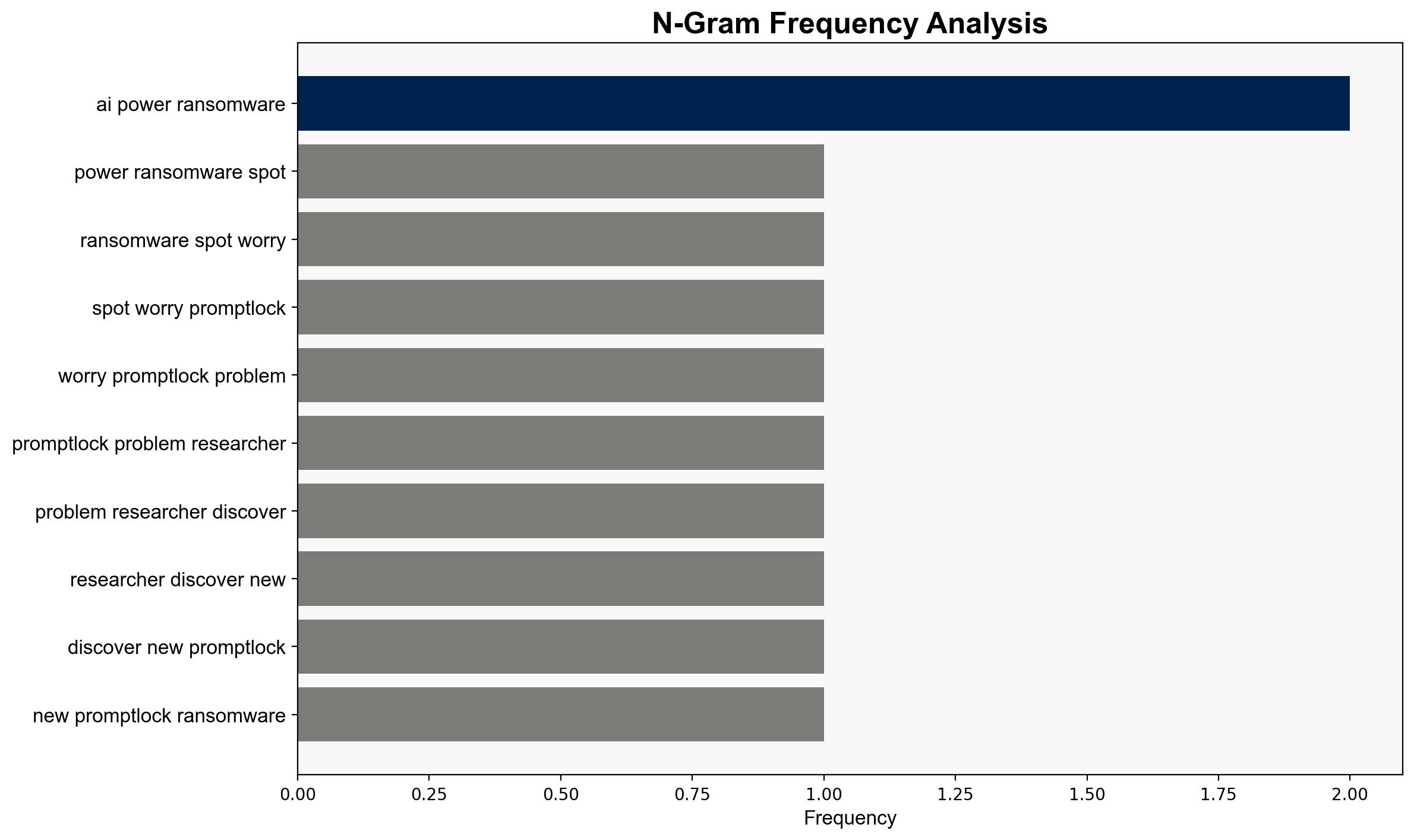The first AI-powered ransomware has been spotted – and here’s why we should all be worried – TechRadar
Published on: 2025-08-27
Intelligence Report: The first AI-powered ransomware has been spotted – and here’s why we should all be worried – TechRadar
1. BLUF (Bottom Line Up Front)
The emergence of AI-powered ransomware, specifically the “PromptLock” proof of concept, represents a significant evolution in cyber threats, potentially lowering the barrier for entry into cybercrime. The most supported hypothesis is that AI integration into ransomware will lead to more sophisticated and unpredictable attacks. Confidence level: Moderate. Recommended action: Enhance AI-based threat detection capabilities and increase collaboration between cybersecurity entities to anticipate and mitigate these evolving threats.
2. Competing Hypotheses
1. **Hypothesis A**: The AI-powered ransomware “PromptLock” is a genuine advancement in cyber threats, indicating a new era where AI significantly enhances the capabilities of cybercriminals, making attacks more sophisticated and harder to detect.
2. **Hypothesis B**: “PromptLock” is primarily a theoretical proof of concept with limited immediate threat potential, serving more as a warning to cybersecurity professionals than a current operational risk.
Using the Analysis of Competing Hypotheses (ACH) 2.0, Hypothesis A is better supported due to the integration of AI models like GPT-OSS, which can dynamically generate malicious scripts, suggesting a real potential for operational deployment.
3. Key Assumptions and Red Flags
– **Assumptions**: It is assumed that AI models can be effectively integrated into ransomware to enhance its capabilities. Another assumption is that cybercriminals have the technical expertise to deploy such AI-enhanced tools effectively.
– **Red Flags**: The proof of concept status of “PromptLock” suggests it may not yet be fully operational. The lack of evidence of widespread deployment could indicate overestimation of the immediate threat.
– **Blind Spots**: Potential underestimation of the speed at which AI-enhanced ransomware can be weaponized and deployed.
4. Implications and Strategic Risks
The integration of AI into ransomware could lead to more targeted and efficient attacks, increasing the risk of significant data breaches and financial losses. This evolution could escalate cyber warfare capabilities, impacting national security and critical infrastructure. The unpredictability of AI-generated scripts poses a challenge for traditional cybersecurity measures, potentially leading to a cybersecurity arms race.
5. Recommendations and Outlook
- Invest in AI-driven cybersecurity tools capable of detecting and neutralizing AI-generated threats.
- Foster international cooperation to establish norms and regulations around the use of AI in cyber operations.
- Scenario Projections:
- Best Case: PromptLock remains a theoretical threat, leading to increased cybersecurity awareness and preparedness without significant incidents.
- Worst Case: Rapid deployment and adaptation of AI-powered ransomware result in widespread cyberattacks, causing severe economic and infrastructural damage.
- Most Likely: Gradual increase in AI-enhanced cyber threats, prompting a parallel evolution in cybersecurity measures.
6. Key Individuals and Entities
– Peter Strycek
– Anton Cherepanov
– OpenAI (in relation to GPT-OSS model)
7. Thematic Tags
national security threats, cybersecurity, counter-terrorism, regional focus





